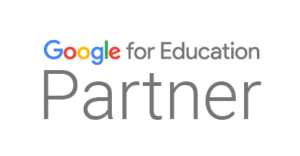The shift to a paperless classroom is often spoken about as a gentle environmental gesture, but the real story is far more powerful. A paperless environment becomes the core structure that holds hybrid learning together and equips students with the digital confidence they will need in a rapidly changing world.
Paperless Classrooms Are Not a Trend
Most schools that begin their paperless journey think of it as a small operational upgrade. They reduce printing costs, reduce clutter and reduce manual processes. Yet a deeper look reveals that a paperless setup is not a cosmetic choice. It is the essential foundation on which hybrid learning can function smoothly.
Hybrid learning is not simply the combination of physical and online classes. It is a continuous learning cycle across home, school, and every space in between. Students need access to the same materials wherever they are. Teachers need the ability to guide, review, respond, and assess without physical limitations. Administrators need visibility into progress, gaps, and outcomes. None of this becomes possible at scale unless the classroom is paperless first.
A paperless classroom creates a single source of truth. Lessons, assignments, notes, assessments, feedback and project files live in one place. This structure removes dependency on geography, time, and physical materials. It allows learning to exist as a flexible layer around the student, not a rigid schedule inside a room.
The Digital Scaffold that Makes Hybrid Learning Work
A hybrid system functions well only when every learner can transition smoothly between different modes of learning. Paper based processes break this continuity. Once learning material is digital, it becomes an active system rather than a passive file. It becomes searchable, shareable, editable, and trackable. This is what allows hybrid learning to truly work.
Teachers can push lesson content to students in real time. Students can revisit concepts, replay modules, and check instructions whenever they need to. Misplaced worksheets or forgotten notes no longer slow anyone down. Teacher feedback can arrive instantly through comments, rubrics, or targeted suggestions. Students can collaborate on shared documents, group tasks, and collective whiteboards even if they are not in the same room.
This creates an uninterrupted learning experience. Instead of thinking in terms of online or offline classes, the student thinks in terms of learning that continues wherever they go. The school gains a level of consistency that was never possible in a paper dependent system.
How Paperless Systems Prepare Students for Real World Skills
A major responsibility of education is to prepare students for the world they will enter. This world is digital first. Workplaces expect digital literacy. Colleges expect self directed learning. Employers expect the ability to use digital tools with confidence. A paperless classroom gives students early exposure to these skills in a structured and safe environment.
Students learn to manage digital files, organise tasks, navigate platforms, submit work online, communicate with clarity, and use collaborative tools. They learn to track their own progress and spot their own gaps through dashboards and feedback logs. These skills shape independent thinkers who can handle complexity without anxiety.
A paperless environment also makes learners more adaptive. They become comfortable working on different devices, using cloud based resources, experimenting with technology, and learning through multiple formats. This adaptability is one of the strongest predictors of future success.
Teacher Empowerment Through Digital Workflow
Teachers often face the invisible burden of paperwork. Grading, sorting, distributing, collecting, storing, and retrieving papers consumes time and mental bandwidth. A paperless system liberates them from these tasks and gives them space to be educators again.
Automated assignment collection, instant attendance, digital gradebooks, and real time analytics reduce manual strain. Teachers can focus on feedback instead of logistics. They can design more meaningful learning experiences because they finally have an organised digital workspace that reflects classroom activity accurately.
When teachers gain visibility through digital trails, they can personalise learning more effectively. They know which student needs support, who is progressing well, and which topics need reinforcement. This precision is not possible in a paper heavy environment.
Operational Strength for Schools
A school that embraces a paperless system becomes resilient. Learning continues even during disruptions. The school can run hybrid schedules without confusion. Administrators get clear records for audits and planning. Parent communication becomes smoother. Curriculum updates become simpler. Data accuracy improves.
This also supports scalability. Schools can expand programs without worrying about rising printing costs or storage demands. They can integrate new learning modules without adding administrative pressure. The entire ecosystem becomes more responsive and more aligned with modern educational standards.
Environmental Benefits Matter, but They Are Not the Whole Story
Yes, paperless classrooms save trees. Yes, the reduction in paper waste contributes to sustainability. But the environmental benefit is only one part of the picture. The real value lies in the digital infrastructure that supports learning continuity, modern skill building, and future readiness.
A school does not go paperless to be eco friendly. It goes paperless to be future capable.
The Future Begins with One Decision
Schools that wait too long to make this transition risk falling behind. The world of learning is evolving faster than ever. Students are already living in a digital universe. The education system must meet them where they are and guide them toward where they need to go.
This begins with the simple choice to move toward a paperless environment that unlocks hybrid learning and empowers every learner.
A Call to Action for Progressive Schools
Netoyed for Education helps schools create this foundation with tools that simplify digital learning, streamline teacher workflows, support hybrid environments, and give students the skills they need for the future. If your school is ready to build a learning ecosystem that is smart, flexible, and resilient, this is the right moment to take the next step.
Your paperless classroom journey is not about reducing paper. It is about expanding possibility.




 1st Floor, H-31, Sector 63,
1st Floor, H-31, Sector 63,